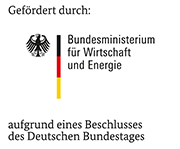14579 N

Hochtemperaturofen in Betrieb
| Laufzeit: | 01.10.2005 - 30.09.2007 |
|---|---|
| Geldgeber: | Bundesministerium für Wirtschaft und Technologie (BMWI) über AiF |
| Bearbeiter: | Hadj Latreche |
| Arbeitsgruppe: | Hochtemperaturwerkstoffe |
Chlorine gas is widely encountered in chemical and metallurgical industries such as coal-fired boilers, waste incinerators and plastic/polymer decomposition mills. Its attack on structural materials at high temperature still represents a serious problem for these industries. This corrosion phenomenon needs to be limited. A solution would be the use of chlorine resistant alloys or materials coated with elements identified as chlorine resistant. Corrosion resistance of materials at high temperatures in oxidizing atmospheres is usually obtained by the formation of a protective surface oxide scale. Under ordinary oxidation conditions three alloying elements are mainly able to form such a protective scale, i.e. Al, Cr and Si. Under chloridizing conditions the situation is much more complex. The protective scale formation may be considerably affected by the presence of chlorine, since it can either attack the formed oxide layer or the underlying metal by passing through cracks or pores in the oxide layer. This impedes the formation of a protective dense oxide scale. This corrosion process is well-known under the name "active oxidation".
zurück
Das IGF-Vorhaben Nr. 14579 N der Forschungsvereinigung DECHEMA e.V., Theodor-Heuss-Allee 25, 60486 Frankfurt am Main wurde über die AiF im Rahmen des Programms zur Förderung der industriellen Gemeinschaftsforschung (IGF) vom Bundesministerium für Wirtschaft und Energie aufgrund eines Beschlusses des Deutschen Bundestages gefördert.
PD Dr. Mathias Galetz
Tel.: 069 / 7564-397
E-Mail: mathias.galetz
H. Latreche, S. Doublet, M. Schütze, Oxid.Met. 72 (2009), 1
H. Latreche, ..., M. Schütze, Materials Science Forum 595-598 (2008), 307
H. Letreche, ..., M. Schütze, Materials and Corrosion 59 (2008), 573
Abschlussbericht (pdf, 5,9 MB)